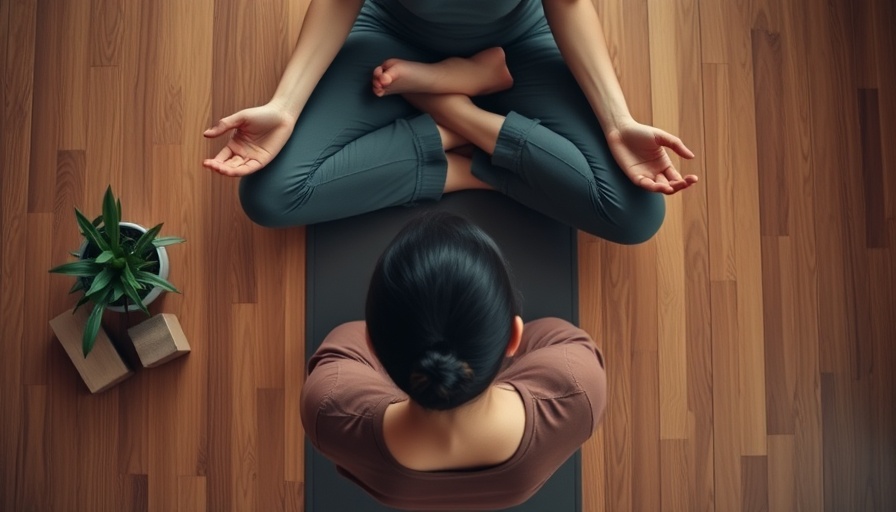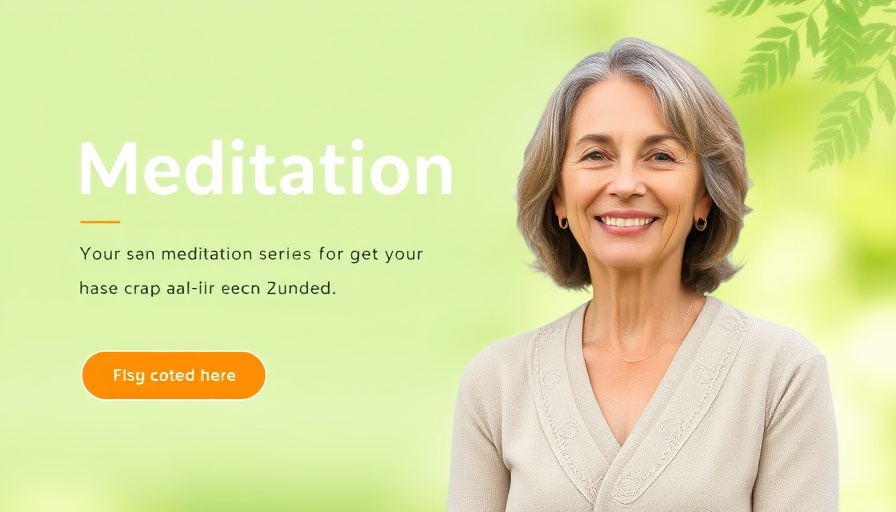
Transform Your Life with Mindfulness Meditation
In today's fast-paced world, many individuals are seeking effective methods to enhance their mental clarity and emotional well-being. Mindfulness meditation has emerged as a popular practice that not only promotes relaxation but also improves overall mental health. Wondering how to take the first step? Here’s a comprehensive guide to starting your own mindfulness journey, inspired by the latest insights from the Garrison Institute.
Establishing Your Practice: Create Time and Space
The first crucial step in your mindfulness meditation journey is to carve out a dedicated time and space for your practice. It’s important to select a quiet area free from distractions—this is where you’ll cultivate a peaceful mental space. Aim for the same time each day to establish a habit, whether it’s early in the morning to set intentions for the day or in the evening to unwind.
Setting Timers for Success
Like any new habit, mindfulness meditation benefits from a gradual increase in practice time. Start with just five minutes and, as you gain confidence, gradually extend your sessions to 15 or even 40 minutes. This approach not only makes meditation manageable but also allow you to enjoy the practice without feeling overwhelmed.
Find Your Comfort Zone: The Right Position
Comfort is crucial for effective meditation. Whether you prefer sitting cross-legged on the floor or resting in a chair with your feet flat on the ground, find a position that suits your body and allows you to relax. If you have mobility issues, adjust your posture as needed—remember, mindfulness meditation should accommodate your personal needs.
Posture: The Unsung Hero of Meditation
Ensuring a proper posture during meditation fosters better focus and engagement. Sit up straight with your hands resting comfortably. A straight spine, relaxed shoulders, and a gentle gaze can help ground you, making it easier to focus your thoughts. Slightly tilting your chin down helps promote a calm demeanor, encouraging deeper relaxation.
The Importance of Breath in Your Practice
Deep breathing is where the magic happens in mindfulness meditation. It not only helps calm the mind but also strengthens the connection between your body and spirit. Start by directing your attention to your breath—this could be the sensation at your nostrils, your diaphragm expanding, or your chest rising and falling. Focusing on one area creates a concrete anchor for your meditation practice.
Staying Present: Acknowledging Wanderlust of the Mind
Throughout your meditation journey, expect that your mind will wander. This is completely normal, even for experienced practitioners! Treat wandering thoughts as clouds passing in the sky—acknowledge them without judgment and gently guide your attention back to your breath. The more you practice this, the stronger your ability to maintain focus becomes.
Encouragement for the Journey
Remember, it’s okay to have off days or lose focus. Acknowledging this without frustration helps cultivate a kind, self-compassionate approach to mindfulness. If you notice wandering thoughts or find yourself dozing off, adjust your posture or keep your eyes partially open to maintain alertness. The key is to approach your practice with kindness toward yourself.
Preparing for a Graceful Exit
When your timer signals the end of your session, take a moment before jumping back into your day. Open your eyes slowly and express gratitude for the time spent in reflection. This practice of acknowledging your session fosters a deeper connection to your mindfulness journey.
Embracing a Holistic Approach to Well-Being
Beyond simply meditating, consider integrating mindfulness into other areas of your life. Engaging in mindful eating, exercising with intention, or practicing gratitude regularly can enrich your experiences. Ultimately, mindfulness meditation is a valuable tool for enhancing your overall well-being, emphasizing the need to connect your mind, body, and spirit holistically.
As you embark on this journey, remember that every effort counts and that progress, not perfection, is key. Mindfulness meditation can lead to profound changes in your life by fostering an attitude of peace and awareness. Want to learn more? Explore mindfulness resources available online to deepen your practice and inspiration!
 Add Row
Add Row  Add
Add 




Write A Comment